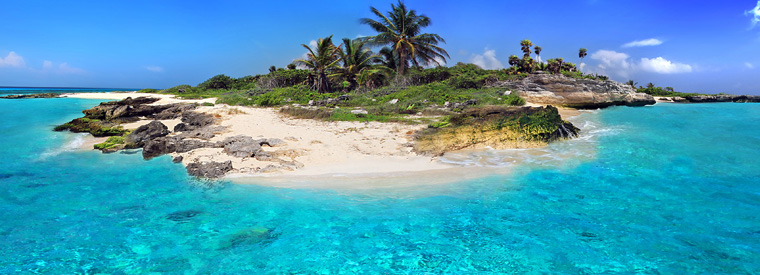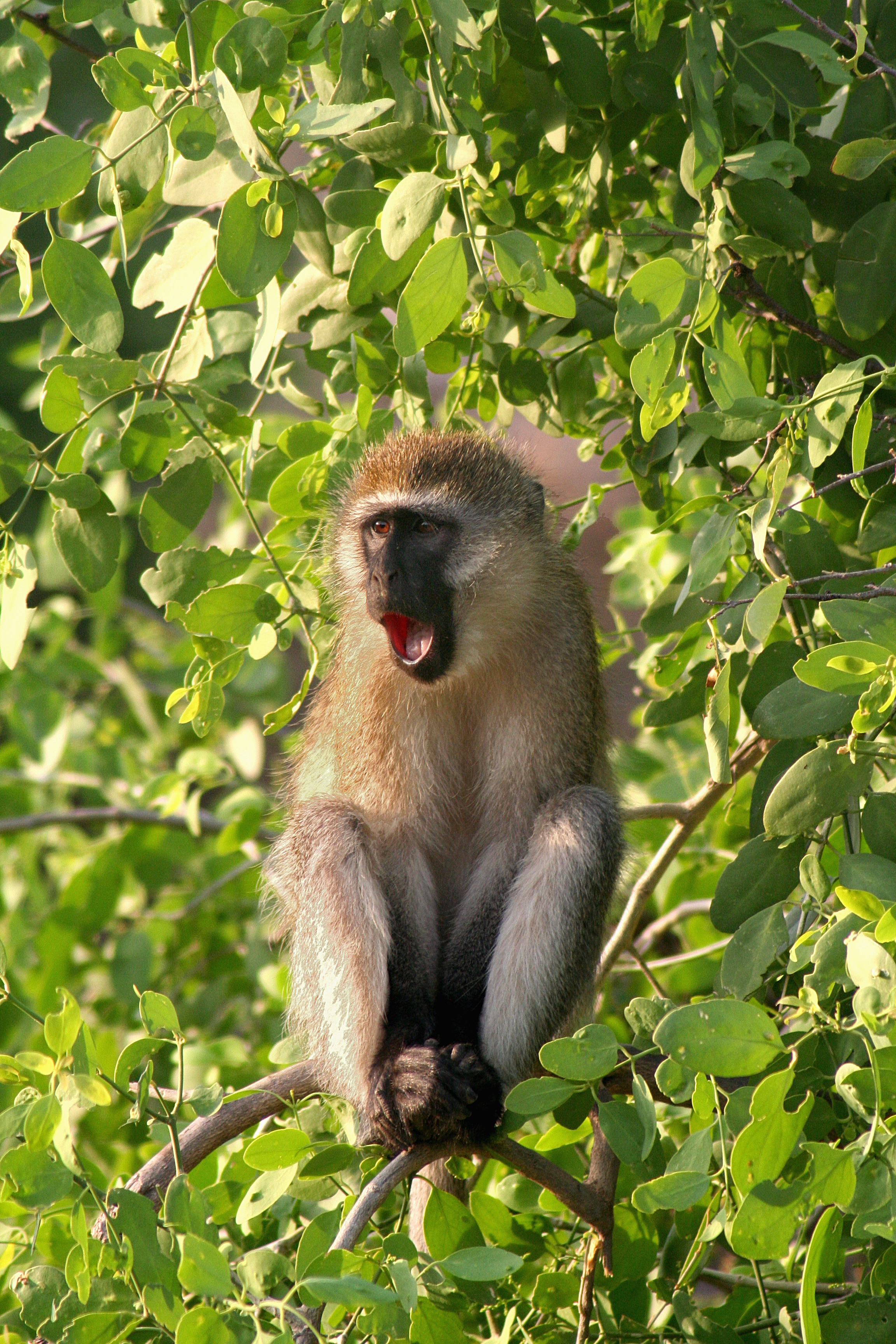The region of the
Caribbean – the islands in the Caribbean Sea, and the coastland of South
America, and Mexico – must have seemed like another world to European sailors.
Covered in lush, tropical jungle and dotted with volcanic outcroppings and what
the Europeans called “smoking mountains” (active volcanoes) the region was also
home to many exotic species of animals.

In addition, the
newcomers brought their own pets and livestock with them. Escaped or released
animals quickly became a further fixture of the area. Some, such as pigs and
goats, fed the pirates, and their associates, the communities of escaped
slaves. Others were amusing or frightening.
Early settlers to South
America found that an old European monster had taken physical form in the
jungle. The legend of blood-sucking vampires long pre-dated the discovery of a
certain tiny South American bats. But when the Spanish encountered small flying
mammals that landed near sleeping humans, then carefully crawled to the victim’s
throat and began to drink blood, it was no stretch of the imagination to call
the creature a Vampire Bat.


Of course, unlike
Dracula, these 3-inch-long animals pose little danger to humans. The local
Aztecs called the creatures “butterfly mice” which isn’t scary at all.
A far more troublesome
rodent (and yes, I know that bats aren’t rodents) was the rat. It was inevitable
that the rats that infested European ships came ashore. Once there, the rats
made themselves at home. There were no naturalists observing the first introduction
of rats to the region, but it’s safe to imagine that they decimated native
populations of birds and small reptiles. The European planters didn’t mind this
at all. But they did mind when the rats began to eat valuable sugar crops.

On the island of St
Johns, someone had the bright idea to import mongooses from India to eat the rats.
The only problem? Rats come out at night, and mongooses (mongeese?) hunt during
the day. So the mongeese (that doesn’t look right either) finished off many
local birds and animals, while doing nothing to control rats. Today St Johns
has a serious mongoose problem… The critters now hang out around trash dumpsters.
There seems to be only one up side. The locals had decided on a plural for the
animals. “Mongoose dem.”
As far as native animals, North America is the place for Alligators. The Caribbean has crocodiles. Usually calmer
than alligators, crocodiles inhabit far southern Florida and the West Indies,, including
Jamaica, Cuba, Hispaniola, Puerto Rico and Grand Cayman. Crocodiles are BIG,
often 20 feet long, and weighing a ton. They tend
to show up wherever there is water and you DON’T want a huge monster that isn’t
shy about eating people.
Since most pirates
wouldn’t have had a chance to visit regions where similar animals lived, these
huge creatures, who can lie motionless for hours, strike with the speed of a
snake, and run on land faster than a man, must have come a quite a shock. Pirates
often carried large caliber hunting rifles when ashore. Modern Floridians must
make do by completely surrounding their swimming pools with wire fence.

If a pirate stopped by
the island of Montserrat he might be offered a plate of Mountain Chicken. And he’d be right to be suspicious of the name. “Mountain Chicken” is a term for the
enormous mountain frogs native to the island. At 8 inched long (from nose to
tail) and weighing two pounds each, the frogs provide impressive frogleg-drumsticks
to those brave enough to eat them.
On the friendlier side,
the Caribbean is also home to a cute little animal that pre-dates the dinosaurs.
Called a Solenadons, this little beasties have furry bodies, naked feet and tails, and a long flexible snout. They live by sniffing out and eating
worms, bugs and other tiny prey, and also eat fruits and vegetables. The
animals are noted for having a ball-and-socket joint (similar to a human hip
joint) on their snouts, which gives the long nose the appearance of having a
life of its own.

The tiny creatures are venomous
(having poisonous saliva) which may be why they’ve survived the rats. And they’re
too small for humans to bother hunting. Solenadons are also defended by the fact
that they smell like goats. They live mostly on the islands of Hispaniola and Cuba,
and are considered living fossils, which have remained virtually unchanged for
73 million years.
The High-Woods Dog of Trinidad
is no more a dog than the mountain chicken is a chicken. It may have been given
its colorful name by African slaves. The proper word for the animal is tanra,
and it’s a tree-climbing relative of the badger. These animals eat almost
anything – honey, meat, vegetables and fruit. They have even been observed to
steal unripe fruit, then hide it for several days until it ripens.

Our last animal is an entertaining creature called the green vervet money. These monkeys probably
came to island of St Kitts as the pets of sailors who had been to Africa.
Though many New World monkeys exist, the green vervet is definitely an
immigrant. And the monkeys came with a problem – a drinking problem.

Sailors of the time were
notorious for giving alcohol to their pets. And when the monkeys escaped, they
sought out free booze anywhere they could find it. In the early days, this
meant fermented run-off from the island’s sugar cane industry. But as time passed, St Kitts' sugar production
dropped. The monkeys began to come into towns, swiping any alcoholic drink they
could.
Today the moneys are a
nuisance to locals and tourists. They hang around bars, swimming pools and
outdoor eateries, and steal any cocktails or cans of beer left unguarded. Then,
just like in pirate days, the animals get into drunken fights and generally act
like jerks. I guess if you can’t have drunken pirates, drunken monkeys will do.
Thanks a lot for keeping great stuff.
ReplyDeleteI am very much thankful for this site.
ReplyDelete
ReplyDeleteYou make so many great points here that I read your article a couple of times.
ReplyDeleteI was really amazed reading this
I am realy extremely glad to visit your blog.
ReplyDeleteMuch obliged to you and sitting tight for your new post
ReplyDeleteThe post you shared is very unique and informative.
ReplyDeleteRemarkable! Its really amazing post.
ReplyDeleteWonderful post with amazing article.
ReplyDelete
ReplyDeleteYou make so many great points here that I read your article a couple of times
ReplyDeleteThanks for shares.
You make so many great post here that I read this article twice. Keep us updated
ReplyDeleteGreat work! This is the type of info that should be shared around the internet. Thanks =)
ReplyDeleteWonderful website. Plenty of useful information here. And certainly, thank you for your effort!
ReplyDeleteWonderful, what a webpage it is! This weblog presents valuable information to us, keep it up.
ReplyDeleteThanks for your marvelous posting! I truly enjoyed reading it, you may be a great author.
ReplyDeleteI want to encourage you to definitely continue your great writing, have a nice day!
ReplyDeleteEnjoyed reading the article above, the article is very interesting and effective.
ReplyDeleteI am truly grateful to the owner of this web page who has shared this impressive article.
ReplyDeleteIt is in reality a nice and useful piece of information. Thank you for sharing.
ReplyDeleteI am satisfied that you simply shared this helpful information. Please stay us informed.
ReplyDeleteThanks designed for sharing such a pleasant idea, post is fastidious, thats why i have read it fully
ReplyDeleteGood day! I would like to offer you a huge thumbs up for your great info on this post.
ReplyDelete
ReplyDeletethis blog is one of my favorite thumbs up!!
I’m really enjoying the design and layout of your website.
ReplyDeleteIt’s a very easy on the eyes which makes it much more pleasant for me to come
here and visit more often. Did you hire out a developer to create your theme?
Exceptional work!
ReplyDeleteWonderful post! Great post on this website. Its awesome
ReplyDeleteThis website is now bookmarked in my browser so that I can continue to keep in touch with you.